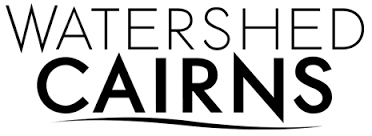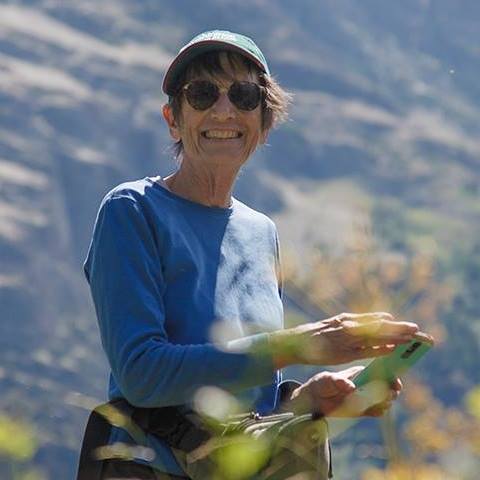Q&A with Libby Reuter, Project Director, Watershed Cairns
The Project…
“Reversing Course”
Location: Alton, Illinois
This project, led by sculptor Libby Reuter and photographer Joshua Rowan, is looking at how the 1900 reversal of the Chicago River created ecological and community challenges along the Illinois river. It involves creating temporary sculptures, or cairns, using found glass objects, and photographing them in select locations near the Mississippi River and its tributaries.

The Organization…
 Watershed Cairns
Watershed Cairns
The collaboration between Reuter and Rowan is intended to underscore the distinctiveness of the riverine ecosystems and their environmental and cultural significance. This grant is being managed by Alton Forward, a not-for-profit collaboration of AltonWorks; its focus is to inspire stakeholders to become champions, ambassadors, leaders, volunteers, investors, partners, and active around the future of Alton.
Follow @WatershedCairns: Website | Facebook
Nine PBS Spotlight: Living St. Louis series feature
The Q&A…
Q1: How do you see the arts/culture/humanities as being essential?

Libby Reuter: Cognitive flexibility. To create a unified composition, an artist will work on a part (For example; a musical phrase, a line in a poem, an argument in an essay, the color of a shirt), then refocus the effect that it has on the entire work, then go back to correct the detail. Arts practice develops brains that can think about complex systems. Another contribution is that the humanities preserve diverse cultural wisdom and imagine new ways of being in the world. They broaden the possibilities for the people we can become and societies we will build.
Q2: What is the most important thing people should know about your work?
Libby Reuter: Watershed Cains: Water Marked with Art aims to inform and inspire people to preserve and protect our freshwater resources. For ten years, photographer Joshua Rowan and I have traveled along rivers of the Mississippi/ Ohio/ Missouri Watershed temporarily placing and making 400 photographs of stacked glass sculptures-cairns. We collaborate with environmental organizations to learn and share information about the issues facing fresh water. The photos, with information about their location and the watershed, and glass cairns have been exhibited in Midwestern museums and on watershedcairns.com.
Q3: How did you arrive at doing what you do?
Libby Reuter: Before the 1993 Mississippi River Flood, I hadn’t paid much attention to the rivers, they were just a thin blue line on the map, or a minute of travel over a bridge, now they were creating havoc. At the time I was creating sculptures and working on Millennium Journey, a community project. Artist-friends and I bottled 1000 tiny bottles of “Flood Mud” to sell for flood relief. We didn’t sell many, but it started me thinking about rivers with watercolors based on old maps. My glass sculptures at the time were inspired by religious reliquaries. In 2010, I saw Joshua Rowan’s photographic exhibit and asked him to work with me on an idea that became Watershed Cairns.
Q4: Who makes your work possible?
Libby Reuter: Our work has been supported by grants from the St. Louis Metropolitan Sewer District, Missouri American Water, Mississippi River Network. Partnerships with the Illinois Sierra Club and Missouri Coalition for the Environment, and exhibits at the Missouri History Museum, St. Louis; Minnesota Marine Art Museum, Winona; Cedarhurst Center for the Arts, Mt. Vernon, Illinois; National Great Rivers Museum and the Jacoby Art Center, Alton, Illinois, and the Audubon Centre at Riverlands, West Alton, Missouri; and St. Louis Galleries have provided income. The photographic prints and Watershed Cairns: Mississippi River North, are available for sale through our website. Thanks to our environmental and river-rat friends for sharing their knowledge and to friends and family who give us glass, help load and unload the van, and encourage our foolishness.
Suggested Reading:
- Holding Back the River: The Struggle Against Nature on America’s Waterways, by Tyler J. Kelley, Avid Reader Press 2021
- Water: A Biography, by Giulio Boccaletti, Pantheon Books 2021
- “Exhibits From the American Water Museum” p63-72 in Postcolonial Love Poem, by Natalie Diaz, Graywolf Press, 2020
About The Illinois Humanities Grantee Partner Spotlight
Illinois Humanities highlights the work of our Community Grants program partners through our “Grantee Spotlight.” It shines the light on our grantee partner’s work, offering details about the organization and the funded project, as well as a Q&A with a team member at the organization. More: ILHumanities.org/Spotlight
About Illinois Humanities
Illinois Humanities, the Illinois affiliate of the National Endowment for the Humanities, is a statewide nonprofit organization that activates the humanities through free public programs, grants, and educational opportunities that foster reflection, spark conversation, build community and strengthen civic engagement. We provide free, high-quality humanities experiences throughout Illinois, particularly for communities of color, individuals living on low incomes, counties and towns in rural areas, small arts and cultural organizations, and communities highly impacted by mass incarceration. Founded in 1974, Illinois Humanities is supported by state, federal, and private funds.
Learn more at ilhumanities.org and on Facebook, Twitter, Instagram, and LinkedIn @ILHumanities.